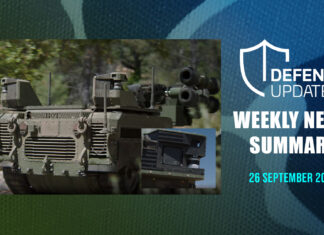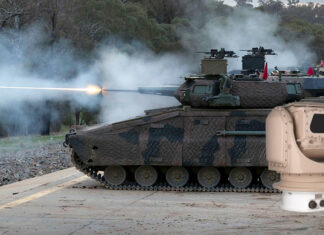The system supports the command and control at divisional, corps and army levels, as well as projection forces. The system can be deployed in fixed, sheltered or mobile elements. The system was developed with support of projection and coalition operations, to support such missions SICF provides an integrated common situational picture to optimize forces management at an area of crisis, reduce the cycle of planning, decision while supporting multi-lingual operation. SICF provides planning, preparation of orders and operational management functions. The system facilitates optimization of the use of available resources.
SICF provides means for preparation, filing, formatting, authenticating and sending of reports, messages and orders distribute and update procedures, alerts and other time critical messages. The system supports various information layers, including planning and monitoring of tactical maneuver, intelligence, ORBAT, maneuver, combat support, logistics, chemical defense, and other aspects, all presentable as map-based and 3D medium.
Basic services the system provides include collaboration and workflow automation of routine processes including planning, preparation and distribution of orders, the management and monitoring of order of battle, monitoring of status of combat unit and reinforcements etc. The system support vector and raster graphics of maps and imagery, including orthophotos and satellite imagery.
Area analysis, including mobility analysis, route conditions, affecting transportation capacity are monitored and displayed as part of the system’s resources. Maneuver planning and monitoring is fully supported, deriving information from manual and automated reports gathered from battle management systems and other resources. The system stores information with timestamp and location information, enabling users to view historical information related to specific tasks or points of interest and evaluate several options when choosing an optimal course of action.
The system provides tools for logistics planning, with typical consumption per unit, by type, and characteristic behavior for peacetime, emergency and wartime conditions. Full support is provided for fire support planning, including objectives fire support planning as part of divisional operations and effects objectives, management of fire support request, coordination and safety. Procedures supporting Chemical, Nuclear and Biological defenses are provided by include observation reports, automated calculations of contaminated zone, based on meteorological information, wind direction etc. The system issues automatic alerts to the affected units. The system interfaces with air-force units to support air traffic management and air defense coordination at low-altitude. Corridors and light aviation of the Army (ALAT) reserved zones are marked and requests for air-to-ground support are processed.
The system uses tactical communications including h RITA, PR4G VHF, communications infrastructure incl. Socrate R&T and Sat-com (Mil) incl. Syracuse, INMARSAT etc.
The system standard IP connectivity uses Windows 2000 operating systems and COTS office automation applications. Interoperability is designed with ful integration into SIR and higher echelon French inter-arms SOCCA, SYCOM and SICA systems, and inteworking with other NATO systems via NATO standard protocols such as AdatP-3 transport standard, APP6-A symbology standard and ATCCIS data interoperability. MIP is also supported to facilitate database replication and messaging exchange.
SICF is developed by Thales Communications and is based on COTS PCs running Windows 2000 systems. SICF was first deployed in 1999 and when fully deployed it is expected to run over 2000 workstations and 50 command posts at corps, EMF, independent brigades and specialized brigades headquarters, the Franco-German force etc. Similar systems are also designed for Canadian and Belgian forces.



















